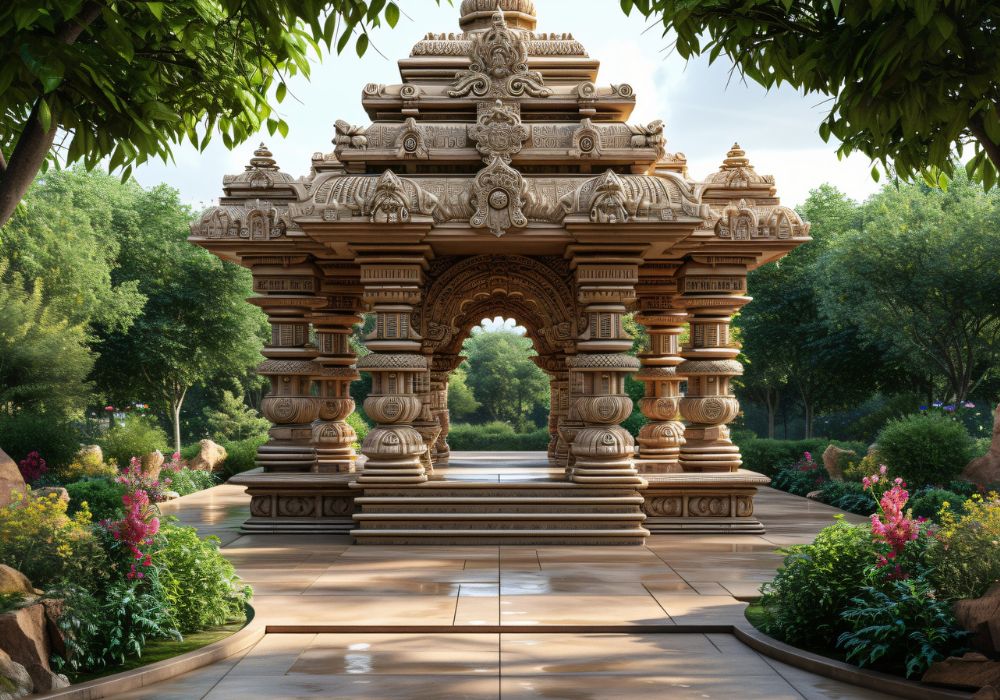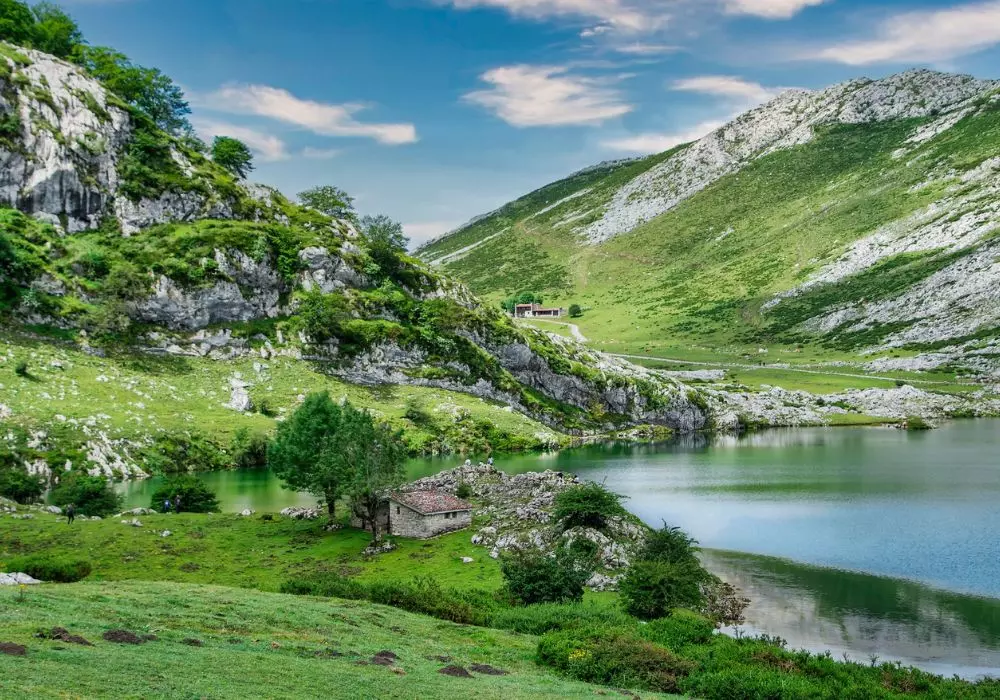India, renowned for its spiritual ethos, is adorned with temples that stand as timeless testaments to faith, architecture, and cultural heritage.
These temples in India are not mere structures; they are living embodiments of the country’s spiritual and architectural prowess.
From the majestic mountains of the Himalayas to the serene shores of the Indian Ocean, temples in India are scattered across the vast landscape, each telling a story of devotion and divinity.
In this comprehensive guide, we will embark on a journey to discover the top 15 temples in India, exploring their history, significance, and architectural splendor.
These temples, steeped in myth and legend, offer a glimpse into the rich tapestry of Indian culture and tradition.
Whether it’s the intricate carvings of the Meenakshi Temple in Madurai or the spiritual aura of the Golden Temple in Amritsar, each temple in India has a unique story to tell.
Join us as we unravel the mysteries and marvels of these sacred spaces, and delve into the spiritual heart of India through its temples.
Temples in India : Review
Explore the architectural wonders and spiritual sanctuaries of India’s temples, each with a unique story and cultural significance.
Ram Mandir Ayodhya Uttar Pradesh
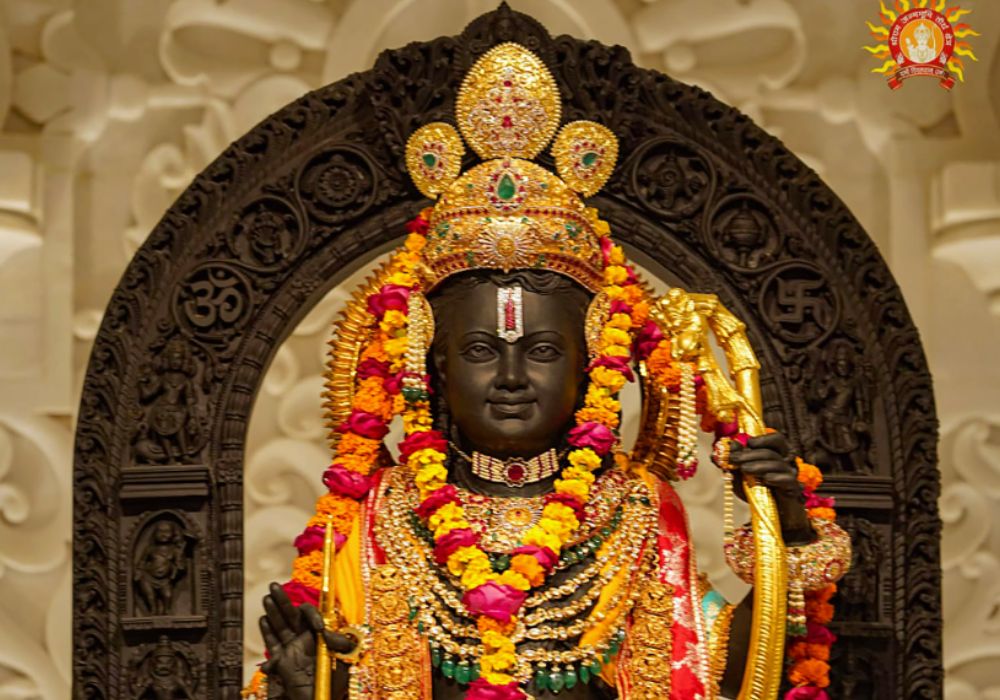

The Ram Mandir, located in Ayodhya, Uttar Pradesh, is dedicated to Lord Rama, the seventh avatar of Lord Vishnu.
The temple holds immense significance in Hinduism as it is the birthplace of Lord Rama.
According to Hindu mythology, Lord Rama was born to King Dasharatha and Queen Kaushalya of Ayodhya. He is revered for his righteousness, bravery, and adherence to dharma (duty).
Lord Rama is best known for his epic journey to rescue his wife, Sita, who was abducted by the demon king Ravana.
With the help of his loyal devotee Hanuman and an army of monkeys, Lord Rama waged a fierce battle against Ravana and eventually defeated him, rescuing Sita and returning to Ayodhya victorious.
The story of Lord Rama, as told in the epic Ramayana, serves as a moral and spiritual guide for millions of Hindus around the world.
It teaches the values of truth, honor, duty, and devotion.
The construction of the Ram Mandir in Ayodhya is seen as a fulfillment of a long-held dream for Hindus.
The temple is expected to be a grand and magnificent structure, reflecting the rich architectural and cultural heritage of India.
Vaishno Devi Temple, Jammu and Kashmir
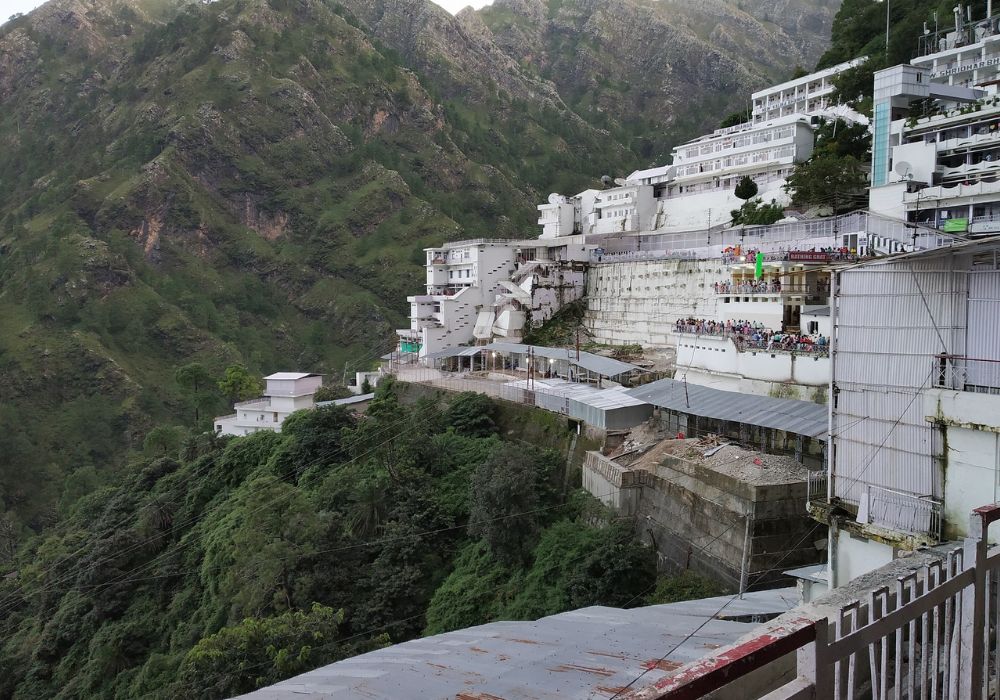

The Vaishno Devi Temple, located in the picturesque hills of Jammu and Kashmir, is one of the most revered pilgrimage destinations in India.
Situated at an altitude of 5,200 feet, the temple is dedicated to Goddess Vaishno Devi, also known as Mata Rani.
The temple is nestled in the Trikuta Mountains and requires a trek of approximately 12 kilometers from the base camp at Katra to reach the main shrine.
Devotees from all over the country undertake this arduous journey to seek the blessings of the goddess.
The trek is not just a physical journey but also a spiritual one, with devotees chanting hymns and prayers as they make their way up the mountain.
Along the way, there are several stops where pilgrims can rest and refresh themselves.
The temple itself is a cave shrine, where the goddess is believed to manifest in the form of three rock formations called the Pindies. It is said that the goddess fulfills the wishes of all those who visit her with a pure heart.
The Vaishno Devi Temple is not just a place of worship; it is a symbol of faith, devotion, and spiritual fulfillment for millions of devotees.
A visit to this sacred temple is believed to be a life-changing experience, leaving pilgrims with a sense of peace and divine blessing.
Golden Temple, Amritsar, Punjab
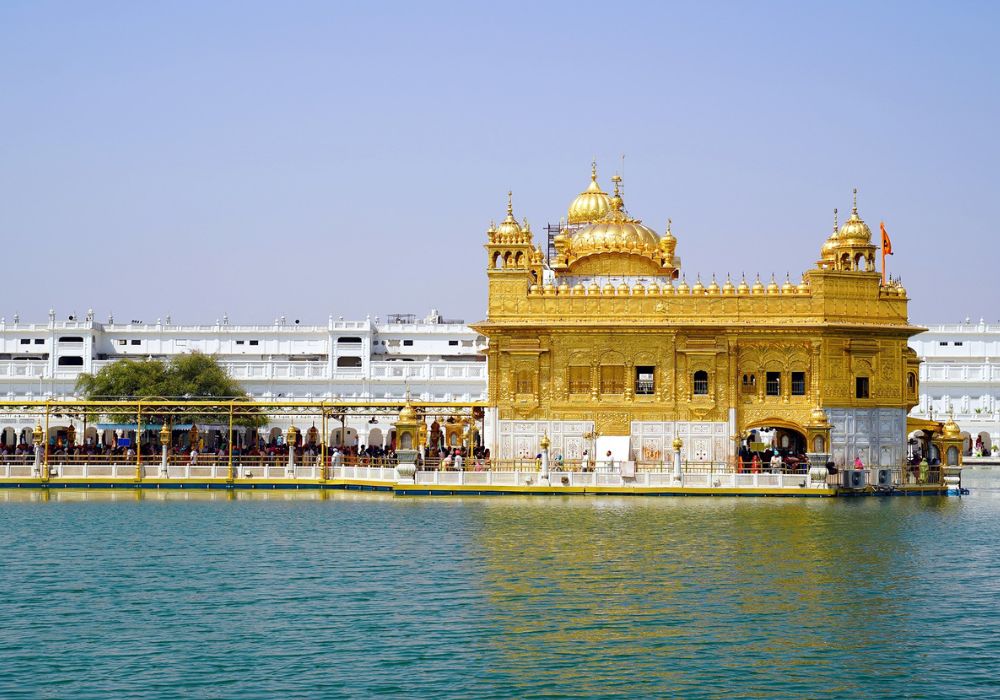

The Golden Temple, also known as Sri Harmandir Sahib, is a spiritual and cultural landmark located in Amritsar, Punjab, India.
It is considered the holiest shrine in Sikhism and is revered by millions of Sikhs worldwide. The temple gets its name from its stunning golden exterior, which gives it a unique and majestic appearance.
The Golden Temple was built in the 16th century by Guru Arjan Dev, the fifth Sikh Guru, and is surrounded by a sacred pool known as the Amrit Sarovar.
The temple complex is a harmonious blend of Hindu and Islamic architectural styles, symbolizing the unity of all religions.
One of the most striking features of the Golden Temple is its four entrances, symbolizing the openness of Sikhism to people of all castes, creeds, and backgrounds.
The temple is also home to the Guru Granth Sahib, the holy scripture of Sikhism, which is recited continuously throughout the day.
The Golden Temple is not just a place of worship; it is a symbol of peace, harmony, and equality.
It welcomes people of all faiths and backgrounds, and visitors are encouraged to partake in the langar, a free community meal served to all, regardless of caste, creed, or status.
A visit to the Golden Temple is a truly spiritual experience, offering visitors a glimpse into the rich culture and heritage of Sikhism and leaving them with a sense of peace and tranquility.
Tirupati Balaji Temple, Andhra Pradesh
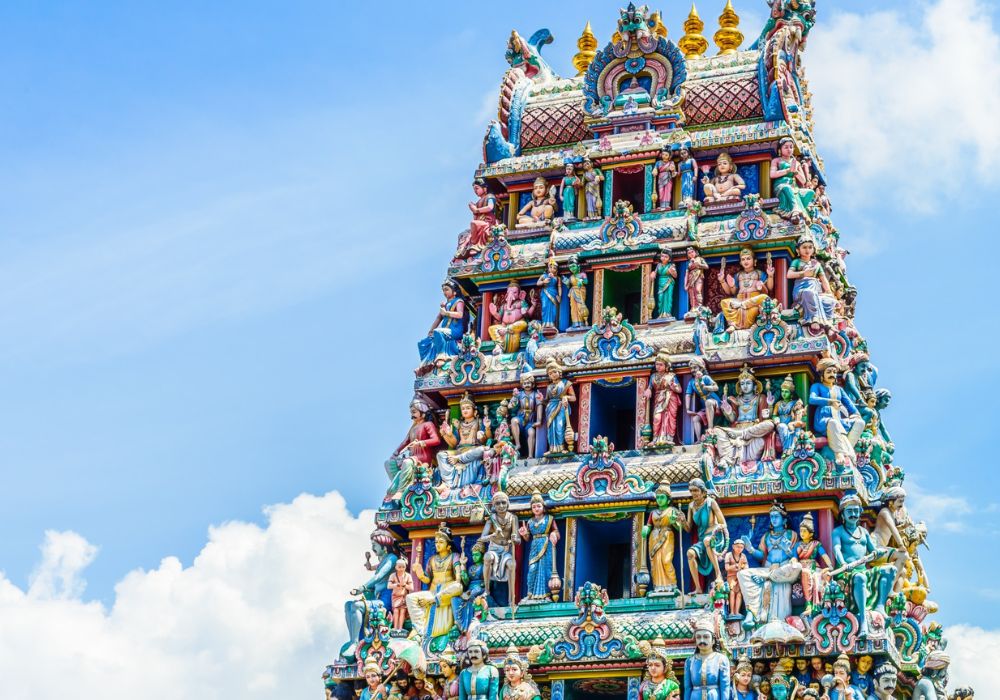

The Tirupati Balaji Temple, located in the hill town of Tirumala in Andhra Pradesh, is one of the most visited and revered temples in India.
Dedicated to Lord Venkateswara, an incarnation of Lord Vishnu, the temple is known for its elaborate rituals and grandeur.
The temple is situated atop the Seshachalam Hills, at an elevation of 2,800 feet, and is a prominent pilgrimage destination for Hindus.
The temple complex is vast, covering an area of approximately 26.75 acres, and is known for its stunning Dravidian architecture.
One of the most significant aspects of the Tirupati Balaji Temple is its tradition of offering ‘prasad’ to the devotees.
The ‘laddu’, a sweet made of flour, sugar, and ghee, is a famous offering at the temple and is believed to be a favorite of Lord Venkateswara.
Devotees from all over the country flock to the temple to seek the blessings of Lord Venkateswara and to fulfill their vows.
The temple is especially crowded during festivals and auspicious occasions, with millions of devotees visiting every year.
The temple’s serene surroundings and spiritual ambiance make it a must-visit destination for those seeking divine blessings.
Jagannath Temple, Puri, Odisha
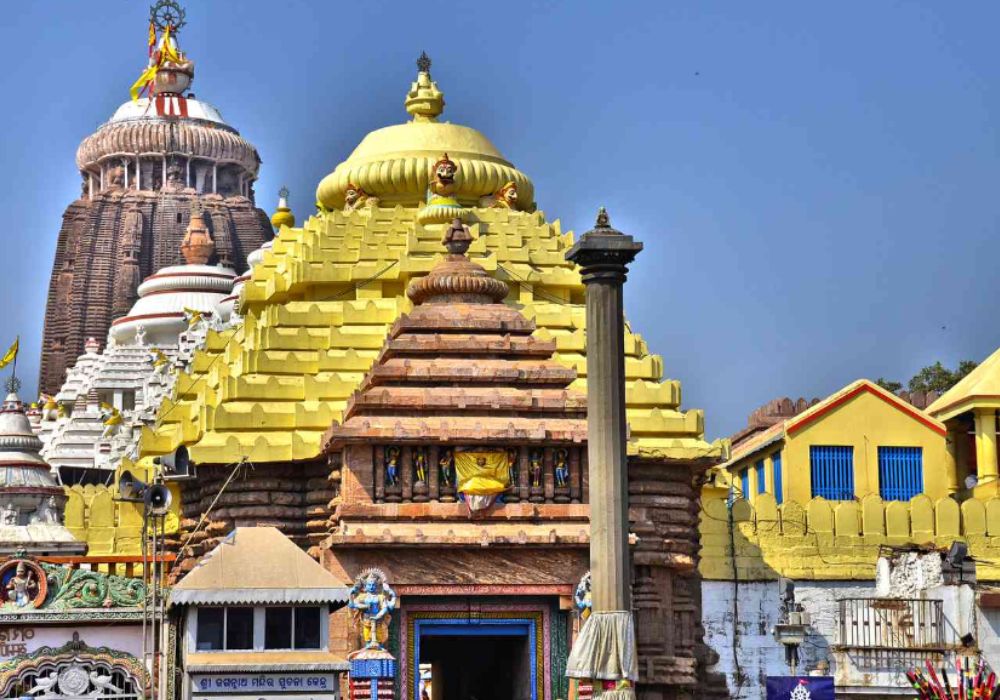

The Jagannath Temple in Puri, Odisha, is a renowned Hindu temple dedicated to Lord Jagannath, a form of Lord Vishnu, along with his siblings Balabhadra and Subhadra.
The temple is a significant pilgrimage destination and is known for its annual Rath Yatra, or chariot festival, which attracts millions of devotees from around the world.
The temple’s main sanctum sanctorum houses wooden idols of Lord Jagannath, Balabhadra, Subhadra, and Sudarshana Chakra.
These idols are replaced in a special ritual known as the “Nabakalebara” once every 12 to 19 years.
The architecture of the Jagannath Temple is a classic example of the Kalinga style of architecture, with a towering spire (shikhara) that rises above the main sanctum.
The temple complex also includes several smaller shrines, mandapas (pillared halls), and a large kitchen where food is prepared for the daily prasad (offering).
The temple is surrounded by a high fortified wall and is accessed through four gates, each facing a different direction.
The Singhadwara, or Lion’s Gate, is the main entrance and is famous for its intricately carved stone sculptures.
The Jagannath Temple is not just a religious site; it is also a symbol of Odisha’s rich cultural heritage and architectural prowess.
A visit to the temple is considered highly auspicious, and devotees believe that a darshan (sight) of the deities will bring them blessings and fulfillment.
Meenakshi Temple, Madurai, Tamil Nadu
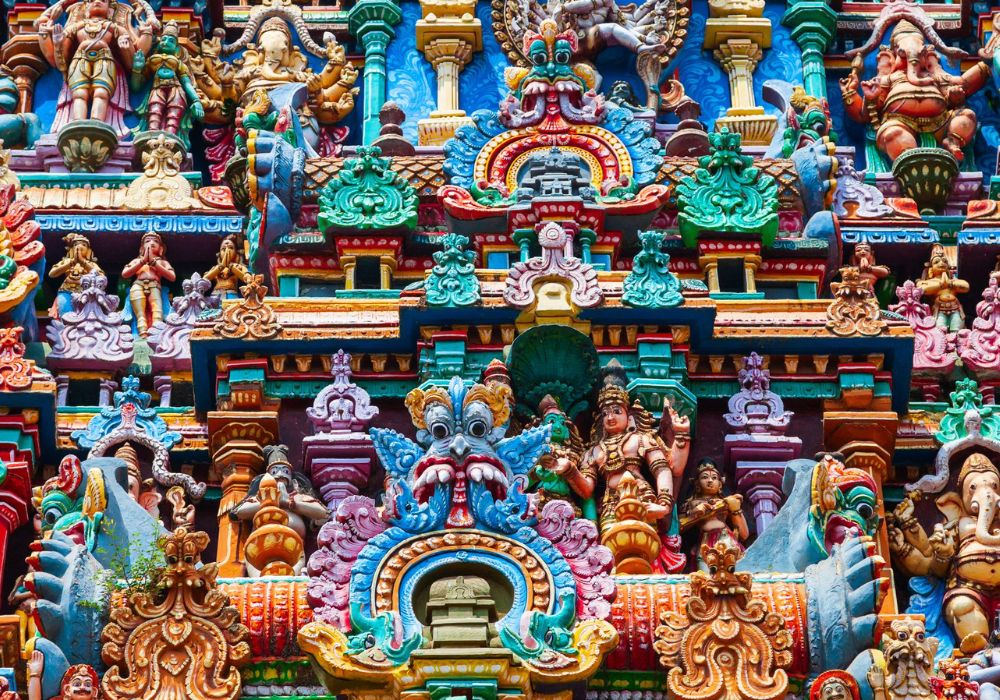

The Meenakshi Temple, located in Madurai, Tamil Nadu, is a historic Hindu temple dedicated to Goddess Meenakshi, a form of Parvati, and her consort, Lord Sundareswarar, a form of Lord Shiva.
The temple is one of the most prominent and oldest temples in India, with a history dating back to the 6th century AD.
The Meenakshi Temple is renowned for its stunning Dravidian architecture, characterized by towering gopurams (gateway towers) adorned with intricate sculptures and carvings depicting various scenes from Hindu mythology.
The temple complex covers an area of about 45 acres and is a vibrant hub of religious and cultural activities.
One of the most striking features of the Meenakshi Temple is its 14 gopurams, with the tallest one reaching a height of about 170 feet.
The temple’s main sanctum sanctorum houses the idols of Goddess Meenakshi and Lord Sundareswarar, which are made of emerald and are adorned with precious jewels.
The Meenakshi Temple is not just a place of worship, it is also a center of art, culture, and learning.
The temple hosts several festivals and events throughout the year, including the Meenakshi Thirukalyanam, a grand wedding ceremony of the deities celebrated in April-May.
Kashi Vishwanath Temple, Varanasi, Uttar Pradesh
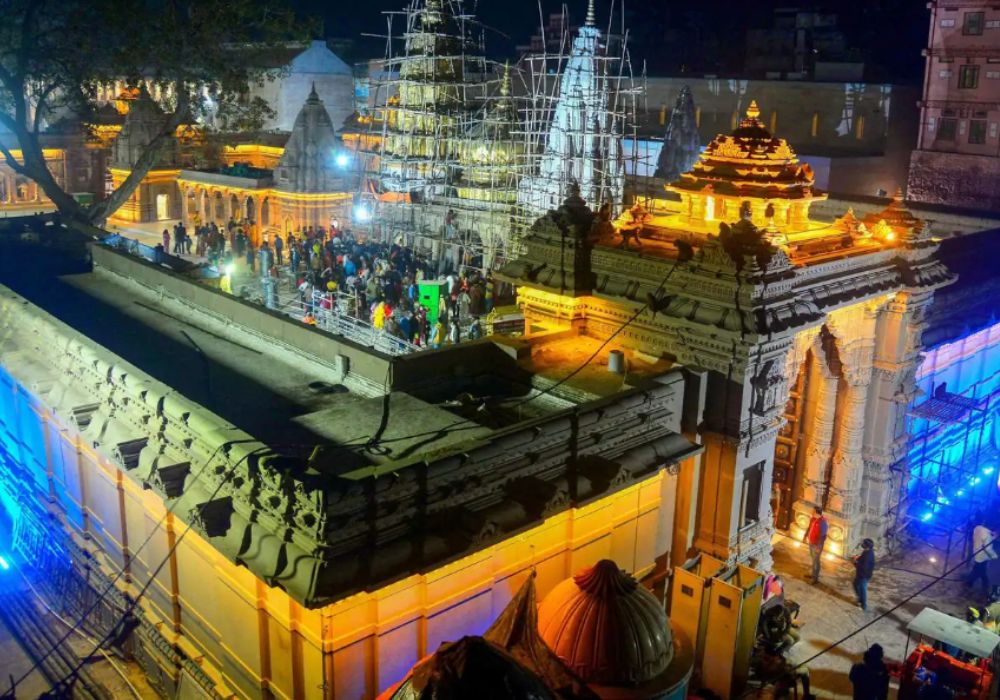

The Kashi Vishwanath Temple, located in the ancient city of Varanasi, Uttar Pradesh, is one of the most sacred and revered temples in India.
Dedicated to Lord Shiva, the temple is also known as the Golden Temple due to its stunning gold-plated spire.
The temple is situated on the western bank of the holy river Ganges and is believed to be one of the twelve Jyotirlingas, or sacred lingams, of Lord Shiva.
The current structure was built in 1780 by Maharani Ahilyabai Holkar of Indore, and it stands at the site of the original temple, which is believed to have been destroyed and rebuilt several times over the centuries.
The Kashi Vishwanath Temple is a significant pilgrimage destination for Hindus, who believe that a visit to the temple and a dip in the Ganges river will cleanse them of their sins and grant them liberation from the cycle of birth and death.
The temple complex is a bustling hub of activity, with devotees offering prayers and performing rituals throughout the day.
The main sanctum sanctorum houses the lingam of Lord Shiva, which is considered extremely auspicious.
Somnath Temple, Gujarat
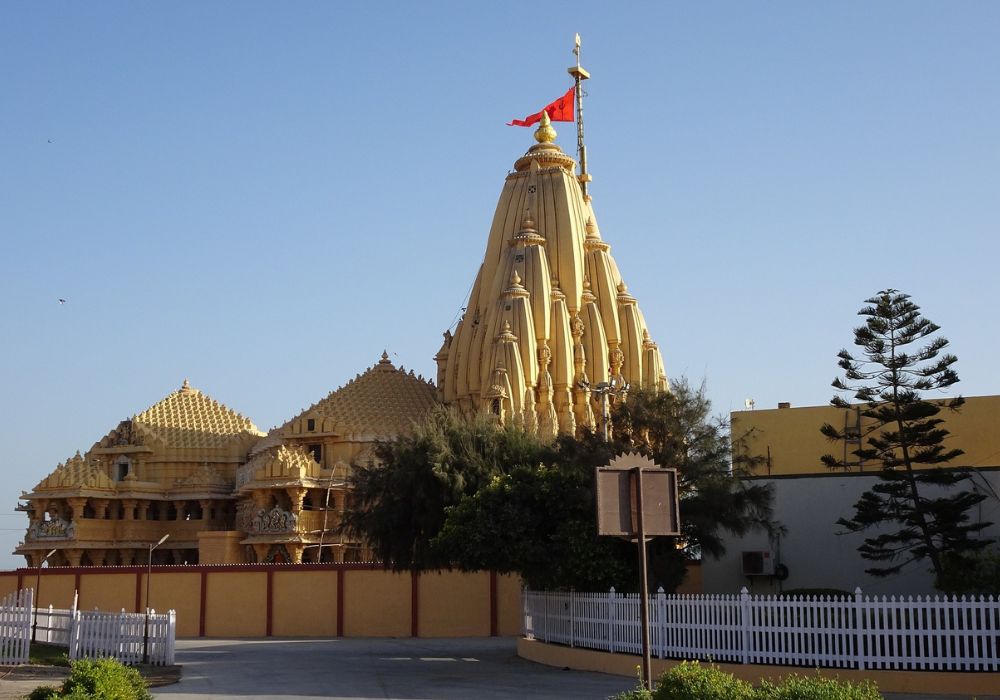

The Somnath Temple, located in the Prabhas Kshetra near Veraval in Saurashtra, Gujarat, is one of the most revered Hindu temples dedicated to Lord Shiva.
It is believed to be the first among the twelve Jyotirlinga shrines of Lord Shiva.
The temple has a rich history and has been destroyed and rebuilt several times due to invasions and natural disasters.
The current structure, built in the Chaulukya style of architecture, was completed in 1951 under the patronage of then Deputy Prime Minister of India, Sardar Vallabhbhai Patel.
The Somnath Temple is known for its architectural grandeur and spiritual significance.
The temple complex is sprawling and includes a large central hall, a sanctum sanctorum, and a towering shikara (spire) that rises above the main shrine.
The temple is a popular pilgrimage destination and attracts devotees from all over the country.
It is believed that a visit to the Somnath Temple and offering prayers to Lord Shiva here can bring peace, prosperity, and fulfillment in life.
The temple is also known for its beautiful location on the shores of the Arabian Sea, offering stunning views of the sea and the surrounding landscape.
A visit to the Somnath Temple is not just a religious experience but also a journey through history and culture.
Kedarnath Temple, Uttarakhand
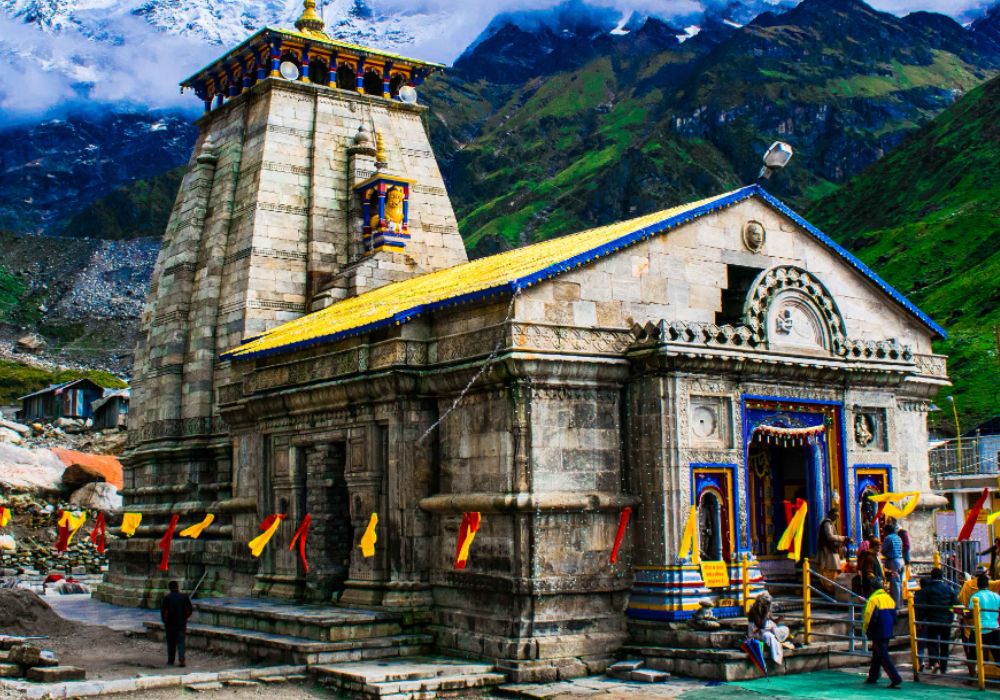

The Kedarnath Temple, nestled in the picturesque Kedarnath region of the Garhwal Himalayas in Uttarakhand, is one of the holiest Hindu temples dedicated to Lord Shiva.
Situated at an altitude of 3,583 meters (11,755 feet), the temple is surrounded by breathtaking snow-capped peaks and is a significant pilgrimage site for Hindus.
The temple is believed to have been built by the Pandavas, the mythical heroes of the Indian epic Mahabharata, and is one of the 12 Jyotirlingas, or sacred lingams, of Lord Shiva.
The temple is also one of the Char Dhams, four sacred pilgrimage sites that every devout Hindu aspires to visit in their lifetime.
The Kedarnath Temple is a modest stone structure with a pyramid-shaped top and is located near the Mandakini River.
The temple is only accessible by foot, and devotees have to undertake a challenging trek of about 16 kilometers from Gaurikund to reach the temple.
The temple holds immense spiritual significance for Hindus, who believe that a pilgrimage to Kedarnath can wash away their sins and lead to salvation.
The temple is open only for six months a year, during the summer months, due to the harsh weather conditions in the region.
Badrinath Temple, Uttarakhand
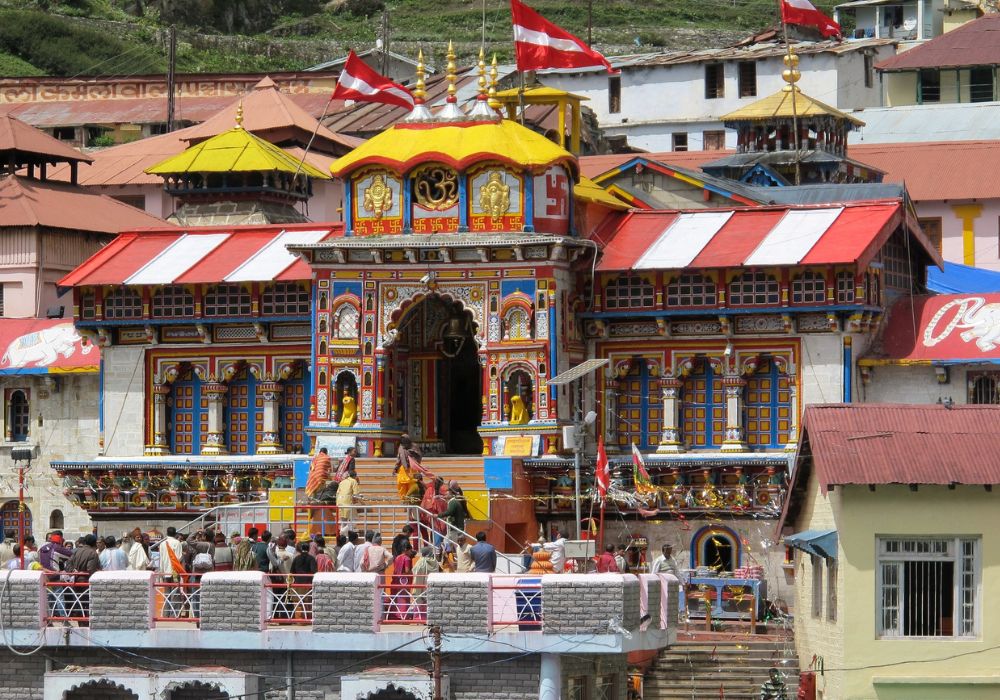

The Badrinath Temple, located in the town of Badrinath in the Chamoli district of Uttarakhand, is one of the most revered Hindu temples dedicated to Lord Vishnu.
Situated along the banks of the Alaknanda River, the temple is part of the Char Dham pilgrimage circuit and is considered one of the holiest shrines in Hinduism.
The temple is believed to have been established by the 8th-century philosopher and saint Adi Shankaracharya and is one of the 108 Divya Desams, or holy abodes of Lord Vishnu, as mentioned in the Vaishnavite texts.
The temple is also one of the Char Dhams, four sacred pilgrimage sites that Hindus believe will lead to salvation.
The Badrinath Temple is a majestic stone structure with a tall conical spire, or shikara, that rises above the main sanctum.
The temple is surrounded by snow-capped peaks and offers stunning views of the Himalayas.
Devotees from all over the country visit the Badrinath Temple to seek the blessings of Lord Vishnu and to take a dip in the holy Tapt Kund, a natural thermal spring near the temple, which is believed to have medicinal properties.
Rameswaram Temple, Tamil Nadu
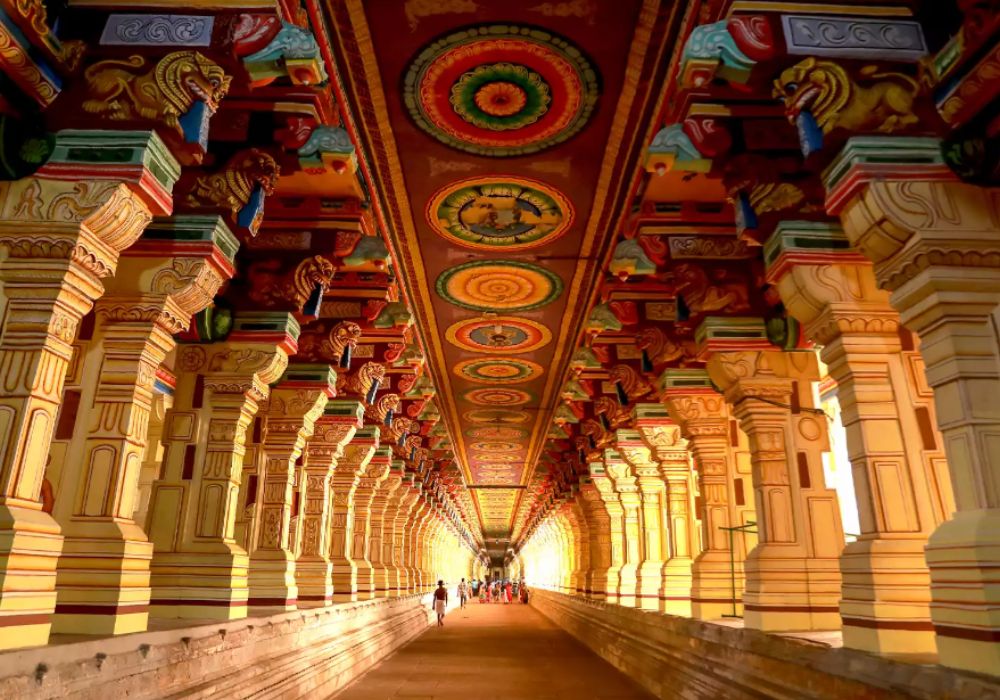

The Rameswaram Temple, located on the Pamban Island in Tamil Nadu, is one of the most renowned Hindu temples dedicated to Lord Shiva.
It is also one of the 12 Jyotirlinga temples, where Lord Shiva is worshipped in the form of a fiery column of light.
The temple is famous for its long corridors, which are adorned with intricately carved pillars and lead to the sanctum sanctorum.
The temple’s main sanctum houses the lingam of Lord Shiva, which is believed to have been installed by Lord Rama himself, according to the Hindu epic Ramayana.
One of the most unique features of the Rameswaram Temple is its sacred water tanks, or teerthams, which are believed to have been created by Lord Rama to cleanse himself of sin after killing the demon king Ravana.
The temple’s most famous teertham is the Agni Theertham, where devotees take a ritual bath before entering the temple.
The Rameswaram Temple is also known for its elaborate rituals and festivals, including the Maha Shivaratri festival, which is celebrated with great fervor and attracts thousands of devotees from all over the country.
Dwarkadhish Temple, Dwarka, Gujarat
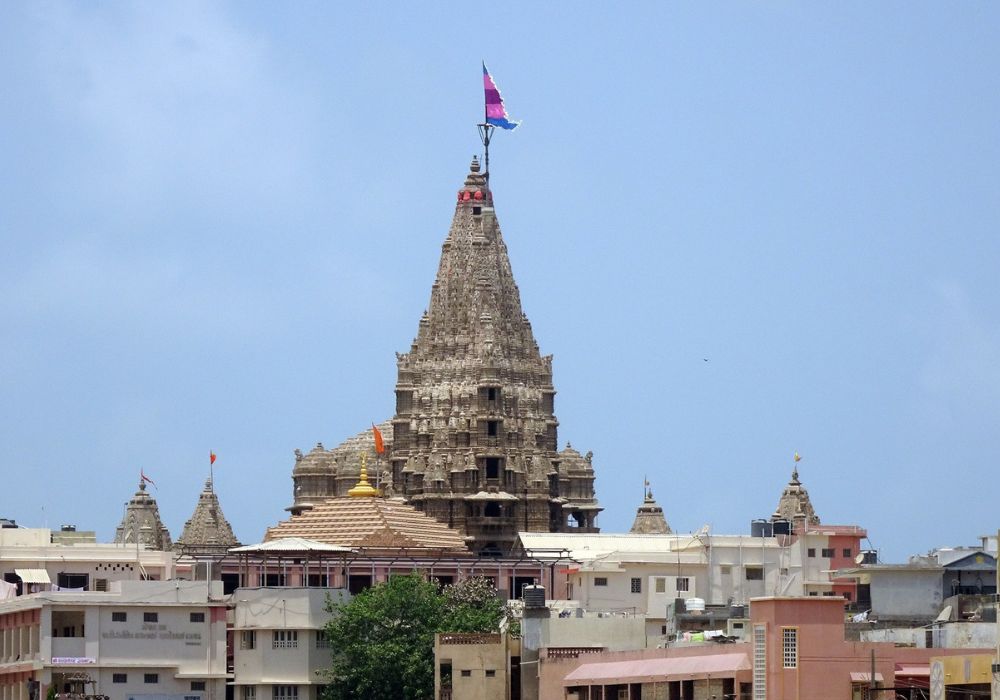

The Dwarkadhish Temple, located in the town of Dwarka in Gujarat, is one of the most revered Hindu temples dedicated to Lord Krishna, who is worshipped here as Dwarkadhish, the ‘King of Dwarka.’
The temple is believed to have been built over 2,500 years ago by the grandson of Lord Krishna, Vajranabha.
The temple is situated on the banks of the Gomti River and is a major pilgrimage site for devotees of Lord Krishna.
The temple complex is surrounded by high walls and has a flag atop the main spire that signifies the presence of the deity.
The Dwarkadhish Temple is renowned for its exquisite architecture, with intricate carvings and sculptures that depict various episodes from the life of Lord Krishna.
The main sanctum sanctorum houses the idol of Lord Dwarkadhish, which is adorned with elaborate jewelry and garments.
Devotees from all over the country visit the Dwarkadhish Temple to seek the blessings of Lord Krishna and to immerse themselves in the divine aura of the temple.
The temple is especially crowded during festivals such as Janmashtami, the birthday of Lord Krishna, when elaborate celebrations are held.
Konark Sun Temple, Odisha
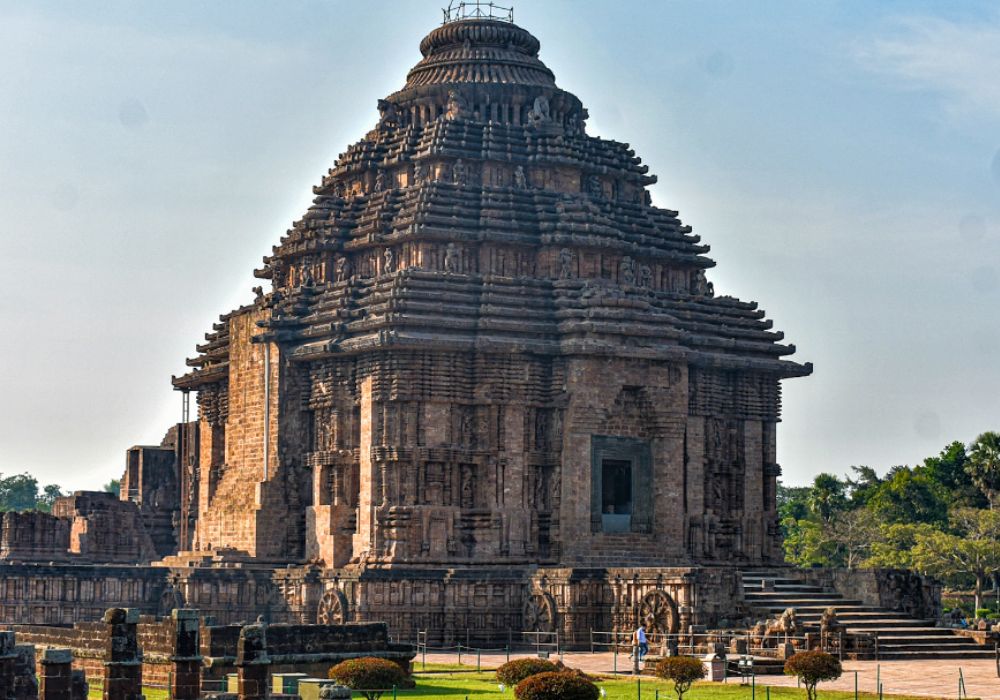

The Konark Sun Temple, located in Konark, Odisha, is a masterpiece of ancient architecture and a UNESCO World Heritage Site.
Built in the 13th century by King Narasimhadeva I of the Eastern Ganga Dynasty, the temple is dedicated to the Hindu sun god, Surya.
The temple is designed in the shape of a colossal chariot with 24 wheels, pulled by seven horses, representing the seven days of the week.
The entire temple is adorned with intricate stone carvings and sculptures, depicting scenes from Hindu mythology, daily life, and erotica.
One of the most remarkable features of the Konark Sun Temple is its impressive main sanctum, or vimana, which was once surmounted by a huge stone dome that is now collapsed.
The temple’s main hall, or jagamohana, is also intricately carved and is supported by massive stone pillars.
The Konark Sun Temple is renowned for its architectural grandeur and artistic excellence, making it a must-visit destination for history buffs and art enthusiasts.
The temple’s intricate carvings and sculptures are a testament to the skill and craftsmanship of the artisans of that era.
Akshardham Temple, Delhi
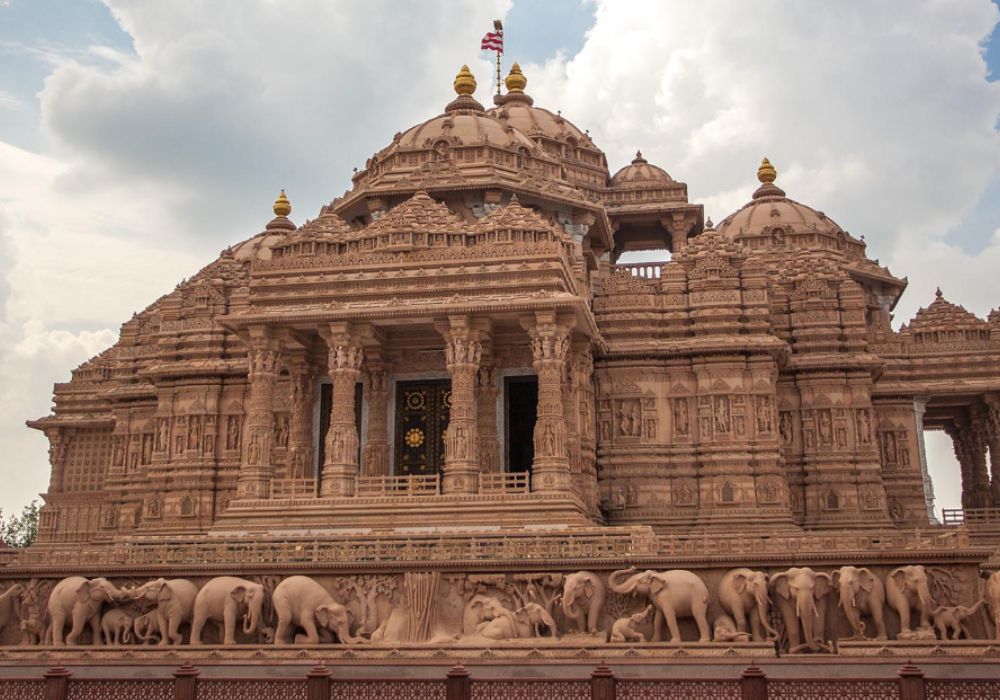

The Akshardham Temple, located in Delhi, is a magnificent Hindu temple complex that showcases the art, culture, and spirituality of India.
Built-in 2005, the temple is dedicated to Bhagwan Swaminarayan and is one of the largest temple complexes in India.
The Akshardham Temple is renowned for its stunning architecture, which combines traditional Hindu architectural styles with modern technology.
The central monument of the temple complex is made of pink sandstone and white marble and is surrounded by beautifully landscaped gardens.
One of the highlights of the Akshardham Temple is its intricately carved stone panels, which depict scenes from Hindu mythology and Indian history.
The temple complex also houses a cultural exhibition that showcases the contributions of Indian saints, scholars, and artists to the world.
The Akshardham Temple is not just a place of worship; it is also a center for learning and cultural enrichment.
The temple complex includes a research center, a multimedia exhibition hall, and a musical fountain that narrates the story of the Upanishads.
Siddhivinayak Temple, Mumbai, Maharashtra
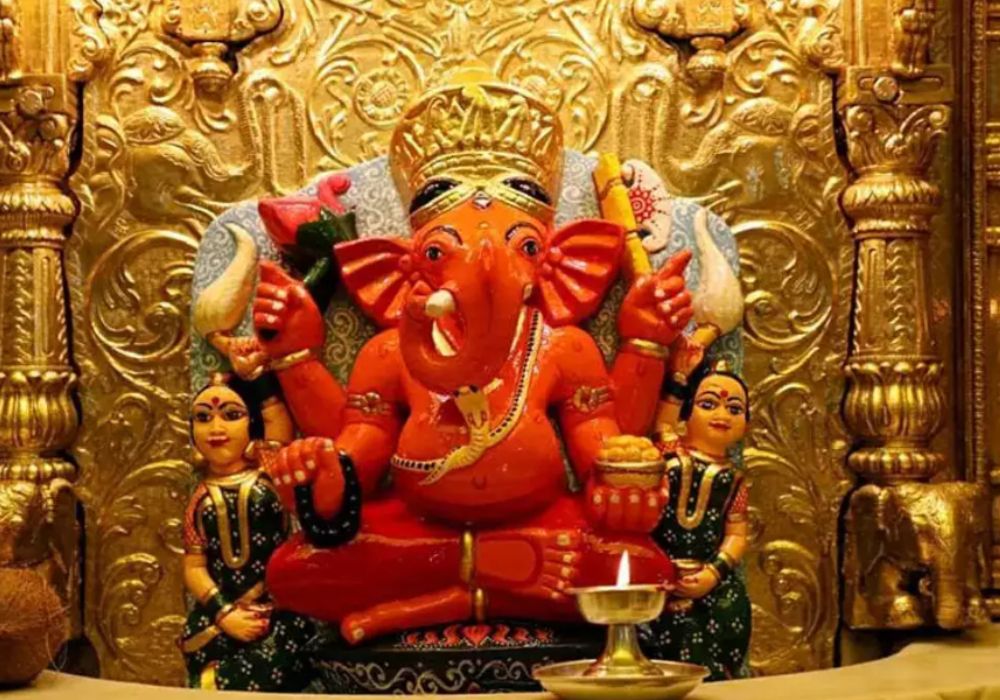

The Siddhivinayak Temple, located in Mumbai, Maharashtra, is one of the most revered temples dedicated to Lord Ganesha.
The temple is situated in Prabhadevi and is visited by thousands of devotees every day, seeking the blessings of Lord Ganesha, the remover of obstacles.
The Siddhivinayak Temple is known for its beautiful architecture, with the main sanctum sanctorum housing the idol of Lord Ganesha, which is carved out of a single black stone.
The temple is also adorned with intricate carvings and sculptures that depict various forms of Lord Ganesha.
One of the most unique aspects of the Siddhivinayak Temple is its idol of Lord Ganesha, which is believed to be self-manifested.
The temple is also known for fulfilling the wishes of its devotees, who come from far and wide to seek the blessings of Lord Ganesha.
Conclusion
The top 15 temples in India offer a glimpse into the rich cultural, architectural, and spiritual heritage of the country.
These temples, dedicated to various deities, have stood the test of time and continue to attract millions of devotees and tourists from around the world.
Visiting these temples is not just a religious experience; it is also an opportunity to witness the stunning architecture, intricate carvings, and vibrant culture of India.
Each temple has its own unique significance and history, adding to the diversity and beauty of India’s temple architecture.
Whether you seek spiritual enlightenment, cultural enrichment, or simply wish to marvel at the beauty of these ancient structures, the top 15 temples in India offer something for everyone.
From the majestic temples of Tamil Nadu to the historic temples of Uttar Pradesh and Gujarat, each temple has a story to tell and a legacy to uphold.
In conclusion, the top 15 temples in India stand as a testament to the country’s rich heritage and spiritual legacy.
They are a source of inspiration, devotion, and wonder, and continue to be an integral part of India’s cultural and religious identity.
Temples in India are not just places of worship; they are symbols of the country’s enduring faith and devotion.
